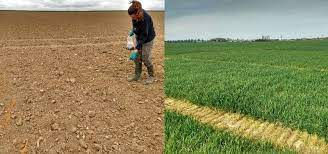Recycling urine for agriculture..🤔
Recycling urine for agriculture can be an effective and sustainable way to reduce water usage and provide nutrients for plants.
Do you know that our Urine contains nitrogen, phosphorus, and potassium, which are essential nutrients for plant growth. However, before using urine as fertilizer, it is important to consider potential health risks, such as the presence of pathogens and pharmaceutical residues.
To safely recycle urine for agriculture, it should be collected and stored separately from other wastewater sources and treated to remove pathogens and pharmaceuticals.
It is also important to consider cultural and social factors, as the use of urine as fertilizer may not be acceptable or feasible in all communities. Additionally, education and awareness-raising may be necessary to address any concerns about the safety and efficacy of urine recycling in agriculture.
- How to treat urine for use in agriculture?
Treating urine before using it as a fertilizer for agriculture is essential to ensure that it is safe and effective. Here are some common methods of treating urine for agriculture:
Dilution: One of the easiest ways to treat urine is by diluting it with water. Dilution reduces the concentration of salts, ammonia, and other potential harmful components. A typical dilution ratio is 1:8, which means one part urine to eight parts water.
Composting: Composting is a natural way to break down the organic matter in urine and make it safer to use as a fertilizer. Urine can be mixed with other organic materials, such as food waste or yard trimmings, and allowed to decompose over time. This process kills pathogens and breaks down harmful chemicals.
Struvite precipitation: Struvite precipitation is a chemical process that removes phosphorus and nitrogen from urine, which can then be used as a slow-release fertilizer. The process involves adding magnesium and calcium to the urine, which forms struvite crystals. The crystals can then be separated and dried, and the remaining liquid can be used as a fertilizer.
Electrolysis: Electrolysis is a process that uses an electrical current to break down urine into its component parts, such as nitrogen, phosphorus, and potassium. These components can then be used as a fertilizer. Electrolysis can also remove harmful substances such as pharmaceuticals and heavy metals.
Membrane filtration: Membrane filtration involves passing urine through a filter that removes bacteria, viruses, and other pathogens. The filtered urine can then be used as a fertilizer. This process is effective but can be expensive.
It is important to note that treating urine for agriculture should be done with caution, as some methods may not remove all harmful substances. It is recommended to seek guidance from a professional or authority on wastewater management before using urine as a fertilizer.




Comments
Post a Comment